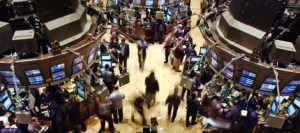
August 8, 2017 | Morning Briefing |
By this time you’re certainly aware that volatility in the U.S. stock market is near record lows. (It’a actually below record lows when you recalibrate the VIX for revisions to that index.) But the lack of volatility in the bond market may have escaped your attention. It’s even more pronounced than the lows in the CBOE S&P 500 Volatility Index (VIX.)

August 2, 2017 | Daily JAM, Notes You Need |
To subscribe to JAM you need to fill in some details below including, ahem, some info on how you'll pay us. A subscription is $199 (although if you're subscribing with one of our special offers it will be lower) for a year for ongoing and continuing access to the...

August 1, 2017 | Daily JAM, Short Term |
To subscribe to JAM you need to fill in some details below including, ahem, some info on how you'll pay us. A subscription is $199 (although if you're subscribing with one of our special offers it will be lower) for a year for ongoing and continuing access to the...

August 1, 2017 | Daily JAM, Short Term, Volatility |
To subscribe to JAM you need to fill in some details below including, ahem, some info on how you'll pay us. A subscription is $199 (although if you're subscribing with one of our special offers it will be lower) for a year for ongoing and continuing access to the...

July 27, 2017 | Daily JAM, Short Term, Volatility |
To subscribe to JAM you need to fill in some details below including, ahem, some info on how you'll pay us. A subscription is $199 (although if you're subscribing with one of our special offers it will be lower) for a year for ongoing and continuing access to the...

July 24, 2017 | Daily JAM, Morning Briefing, Short Term |
I’d call the market mood “odd” right now. It’s maybe “hopeful fear.” Or maybe “fearful hope.” Nobody wants to move to the sidelines in case the rally is going to continue. Nobody wants to be too long just in case we’re looking at a pullback or correction. The focus of this uncertainty is the big technology stocks of the NASDAQ

June 26, 2017 | Daily JAM, Short Term, Volatility, You Might Have Missed |
To subscribe to JAM you need to fill in some details below including, ahem, some info on how you'll pay us. A subscription is $199 (although if you're subscribing with one of our special offers it will be lower) for a year for ongoing and continuing access to the...

June 15, 2017 | Daily JAM, Morning Briefing, Short Term, Volatility, You Might Have Missed |
Anyone who bought technology stocks on the dip last Friday and Monday is feeling unhappy today. And that spells a worried market. Especially since key stocks in the sector such as Apple (AAPL) and Amazon (AMZN) are showing signs of breaking through important support. The NASDAQ Composite Index is off 0.93% today as of 12:30 p.m. New York time.

June 12, 2017 | Daily JAM, Morning Briefing |
The market is more anxious today but it doesn’t seem anywhere near panic country. The CBOE S&P 500 Volatility Index (VIX), was up another 10% today (10.75% as of 1:30 to be exact) on top of a greater than 10% gain on Friday, but that’s a relatively restrained move considering that what is known as the “fear” index has been trading near record lows and that this index can tack on moves of 30% to 40% in a day when investors get really fearful.

June 1, 2017 | Daily JAM, Volatility |
To subscribe to JAM you need to fill in some details below including, ahem, some info on how you'll pay us. A subscription is $199 (although if you're subscribing with one of our special offers it will be lower) for a year for ongoing and continuing access to the...

May 19, 2017 | Daily JAM, Morning Briefing, Short Term, You Might Have Missed |
Last night I posted that today would be critical for this market’s buy on the dip reflex. Yesterday’s move up after the Wednesday rout wasn’t convincing. As long as traders and investors treat any dip as an occasion for buying, it will be difficult for this market to build up any downside momentum. So far, today’s market action is a very strong vote in favor of the continued working of the buy on the dip reflex.

May 17, 2017 | Daily JAM, Volatility |
To subscribe to JAM you need to fill in some details below including, ahem, some info on how you'll pay us. A subscription is $199 (although if you're subscribing with one of our special offers it will be lower) for a year for ongoing and continuing access to the...













